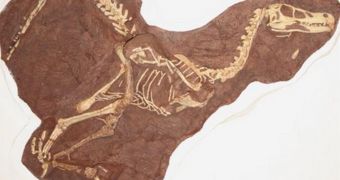A group of archaeologists and paleontologists has recently made an important discovery when they unearthed the remains of a dinosaur that was found to be closely related to the famous Velociraptor. The fossilized bones were discovered in inner Mongolia, and the research team is ecstatic with the discovery. The two dinosaur species are part of the same group that gave birth to modern-day birds, and they are also closely-related to each other evolutionarily.
A compared analysis of specimens from both animals could lead to a better understanding as to the factors that led to this change, as undoubtedly the two species have a common ancestor. They are both dromaeosaurids, which means that are members of a family of theropod dinosaurs that were the precursors for modern birds. The experts involved in the new study say that the fossil they discovered had an advantage over other similar findings, simply because it was exquisitely-preserved. According to analysis, it would appear that the sediment layers in which the remains were found date back from the time of the Upper Cretaceous period.
The new animal has been called Linheraptor exquisitus, and researchers say that its finding marks the establishing of an entirely new genus within the dromaeosaurids family. “Linheraptor is similar to Velociraptor in many features,” the experts wrote in a scientific paper accompanying the study, which appears in the latest issue of the respected scientific journal Zootaxa. The exact age of the remains has yet to be established, but the investigators know that it is between 145 and 65 million years old. The team conducting the digs and afferent research is based at the Chinese Academy of Sciences, in Beijing, and was led by expert Xing Xu.
The scientist says that the L. exquisitus fossil was found together with a complete set of claws and teeth, which is sort of like a treasure trove for paleontologists. It's rare that they get the chance to discover such “accessories.” Generally, only disparate bones are found, and the entire skeleton then needs to be reconstructed based on them. The specimens found in Mongolia had “raptorial claws” on its feet, which means it was a highly-evolved predator. Particular features on its jaws and feet showed that it was a dromaeosaurid. Similar traits can also be found on the Velociraptor, the BBC News reports.

 14 DAY TRIAL //
14 DAY TRIAL //